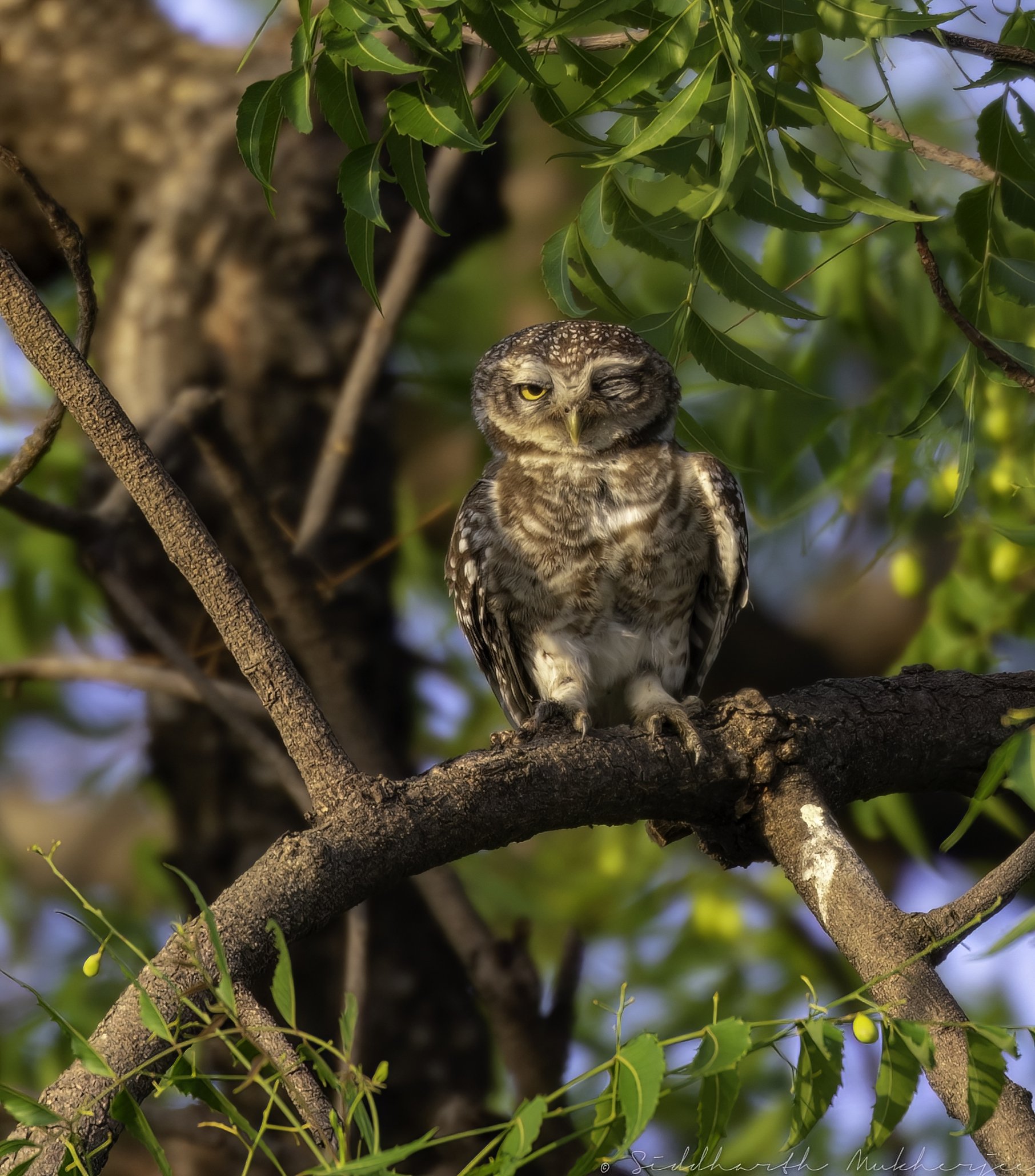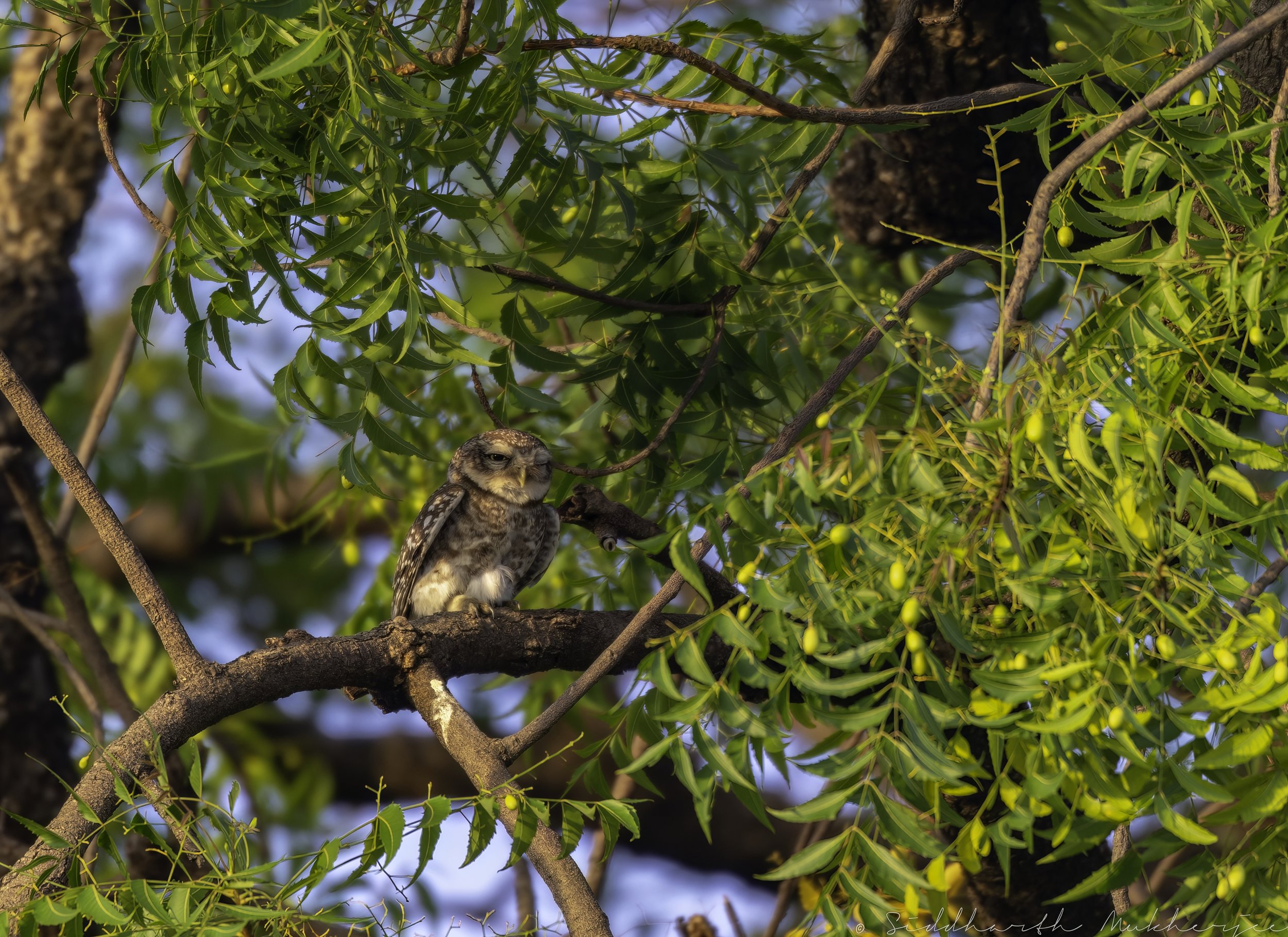Spotted Owlet
Athene brama
Raptors of Kumbhargaon
Bhigwan Bird Sanctuary, Chincholi Wildlife Sanctuary & Yenkathala Grasslands
Once again we venture into the grasslands surrounding Kumbhargaon, a nondescript village in the Satara district to the south of Bhigwan, a quaint, small and rugged town on the border of the Pune and Solapur districts in Maharashtra, in India. This time in search of the Spotted Owlets. The area around Bhigwan and the River Bhima is vast and unique with diverse habitats ranging from the shallow wetland ecosystem of the Ujni backwaters to the surrounding rich farmlands and dry deciduous scrub forest with interspersed grasslands.
Surrounding this lush ecosystem are rich grasslands and fertile farms home to an impressive list of birds, mammals and reptiles. I have talked about
the Eagles - the endangered Steppe, the vulnerable Greater Spotted, and rare & also vulnerable Eastern Imperial;
the Harriers - the Pallid, the Montagu’s & the Eurasian Marsh;
and in my last blog about the Short-eared Owl. The Short-eared was the latest addition to the owls I have observed, photographed and written about in a Parliament of Owls. Although I have briefly talked about the Spotted Owlet in that blog this here is a detailed walkthrough of the beautiful Athene brama.
Surrounding this lush ecosystem are the rich grasslands and fertile farms home to an equally impressive list of birds, mammals and reptiles like the Indian courser, chestnut-bellied sandgrouse, blue-cheeked bee-eater, grey francolin, woolly-necked stork, and demoiselle cranes. The Indian chameleon is often seen here and after dark, creatures of the night like the leopard gecko and termite hill gecko are out and about. Although rare, the common sand boa, rat snake, and Russell’s viper are also spotted. The open areas around the villages host mammals like the black-naped hare, jungle cat, golden jackal, and Indian grey mongoose. The Asian palm civet can also be seen, especially at night. The extensive grasslands protect many mammals like the Chinkara, Hyena, Wolf and Indian fox. It is also popular for grassland birds and the birds of prey, including the Steppe Eagle and the rare Eastern Imperial Eagle. While largely unnoticed, frogs, toads, damselflies, dragonflies, beetles, and scorpions also inhabit the area. A study published by the Zoological Survey of India in 2002 reported 54 species of fish.
During our time here we were hosted by and had the expert help of Sandip Nagare and his team of knowledgeable guides from the Agnipankha Bird Watcher group, especially Ganesh Bhoi, who went out of their way to ensure we had fantastic opportunities to explore, discover, observe & photograph over 82 species of birds and wildlife including some rare ones. We stayed at Sandip’s homestay of the same name and had the added pleasure of indulging in delectable home cooked food.
‡‡‡‡‡
The Spotted Owlet
The Spotted Owlet (Athene brama) is a small tropical asian owl breeding from mainland India to Southeast Asia. A common resident of open habitats including farmland and human habitation, it has adapted to living in cities. They roost in small groups in the hollows of trees or in cavities in rocks or buildings. It nests in a hole in a tree or building, laying 3–5 eggs. They are often found near human habitation. The species shows great variation including clinal variation in size and forms a superspecies with the very similar little owl.
A small uncrested owl with a round head and a short tail. It is grayish-brown overall with white spots above while its underparts are white with brown bars. Note the distinctive white eyebrows and neck-band. Often active at dawn and dusk when it utters a loud “chirurr-chirurr-chirurr” laugh in addition to a variety of high-pitched squeals and whistles. Inhabits all kinds of open habitats but avoids dense forest and wetter regions.
The nominate race brama is generally darker and smaller than the race indica found in drier regions. The Spotted Owlet is small (21cm) and stocky. The upperparts are grey-brown, heavily spotted with white. The facial disc is creamy-buff with brown concentric lines. The forehead and lores are white to pale buffy. Eyebrows are white and curved. Eyes are pale to deep golden-yellow. The sides of the face are dark, contrasting with white rear edges. The cere is dusky green or greenish brown, the bill being greenish-horn, but sometimes darker, and somtimes more yellow on the upper ridge. The crown, sides of the head, and upperparts are earth-brown to greyish or rufescent, marked with small white spots. The nape has very large white spots, forming a collar, while the back has large white spots, and the scapulars have broad white edges. The chin, throat, and front and sides of the neck are white, with a dark brown band below this. The remainder of the underparts are whitish, spotted and mottled with brown, sometimes with broken bars. The wings are spotted and banded white, and the tail has narrow white bars. The tarsi is feathered, and the toes bristled and dirty yellowish. Claws are dark horn, and soles yellowish. There is a white neckband and supercilium (line above each eye) and males and females look alike. The flight is deeply undulating. In Baluchistan it overlaps with the Little Owl from which it can be separated by the unstreaked crown and narrow tail bands.
When disturbed from their daytime site, they bob their head and stare at intruders.
Generally crepuscular and nocturnal, but sometimes seen by day as we see here. Roosts by day in tree hole, on a branch, or on abandoned buildings and may roost in pairs or small groups. Their flight is deeply undulating, consisting of a few rapid flaps followed by a glide with wings pressed to the body. Mainly preys upon beetles, moths and other insects. Also takes earthworms, lizards, mice and small birds. Usually hunts from a perch, pouncing on prey, but occasionally takes insects in flight. Often uses street lamps as hunting bases, hawking insects attracted to the lights.
The Spotted Owlet is generally seen in open or semi-open country, including semi-desert; within and on outskirts of villages and cultivation, groves with old trees, and ruins. This species avoids thick forest and lives from sea-level to about 1400m. It is distributed throughout Southern Asia, from Iran to Vietnam and present on most of the Indian subcontinent (except Sri Lanka) and Southeast Asia, except peninsular Thailand and Malaysia.
‡‡‡‡‡
The following are some photos of a pair of Spotted Owlets recorded on the outskirts of Kumbhargaon on some abandoned warehouses. We saw the pair perched on a wall and had the opportunity to observe them in relative peace as we were the only people there. The owlets were relaxed and were interacting and watching their surroundings.
A brief note on Owl behaviour
An Owl's daily activity begins with preening, stretching, yawning and combing its head with its claws. The plumage is often ruffled up, and claws and toes are cleaned by nibbling with the beak. The Owl will then leave its roost, sometimes giving a call (especially in breeding season). Owls have very expressive body language. Many species will bob and weave their head, as if curious about something - this is in fact to further improve their three-dimensional concept of what they are viewing.
When relaxed, the plumage is loose and fluffy. If an owl becomes alarmed, it will become slim, its feathers pulled in tightly to the body, and ear-tufts, if any, will stand straight up - as observed in our case. A pygmy Owl will cock its tail and flick it from side to side when excited or alarmed. Little owls bob their body up and down when alert.
When protecting young or defending itself, an Owl may assume a "threat" or defensive posture, with feathers ruffled to increase apparent size. The head may be lowered, and wings spread out and pointing down. The Spotted Owlet, when disturbed from their daytime site, will bob their head and stare at intruders. Some other species become quite aggressive when nesting, and have been known to attack humans.
Read about the other owls I have seen and photographed and the three I have detailed so far.
During the time we had with these owls they remained perched on the same wall and more or less in the same position. We were also not able to change our position so unlike the Short-eared Owl these photos are at the same location but exhibiting the various changes the owls themselves made in their positions as they looked around.
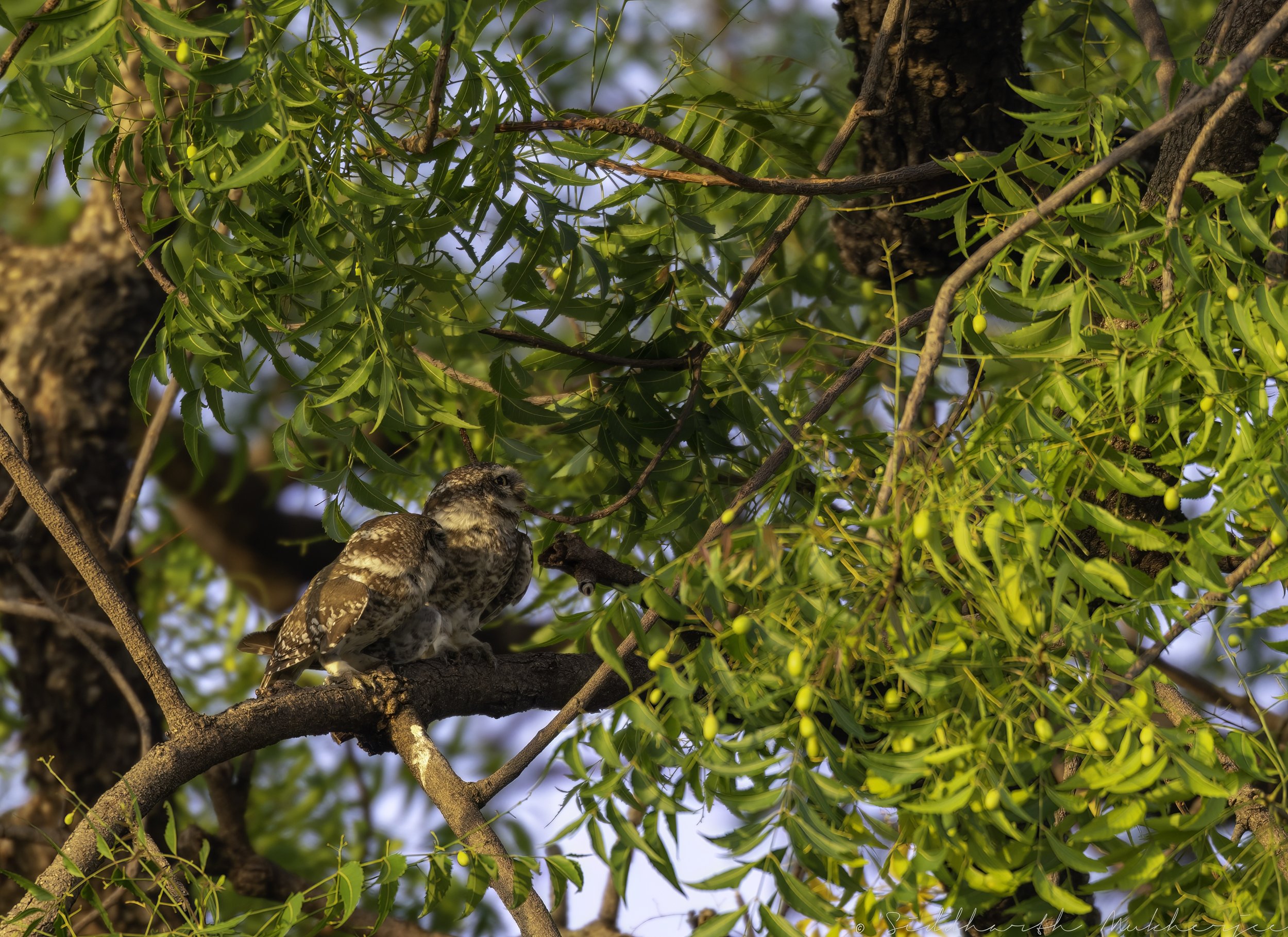
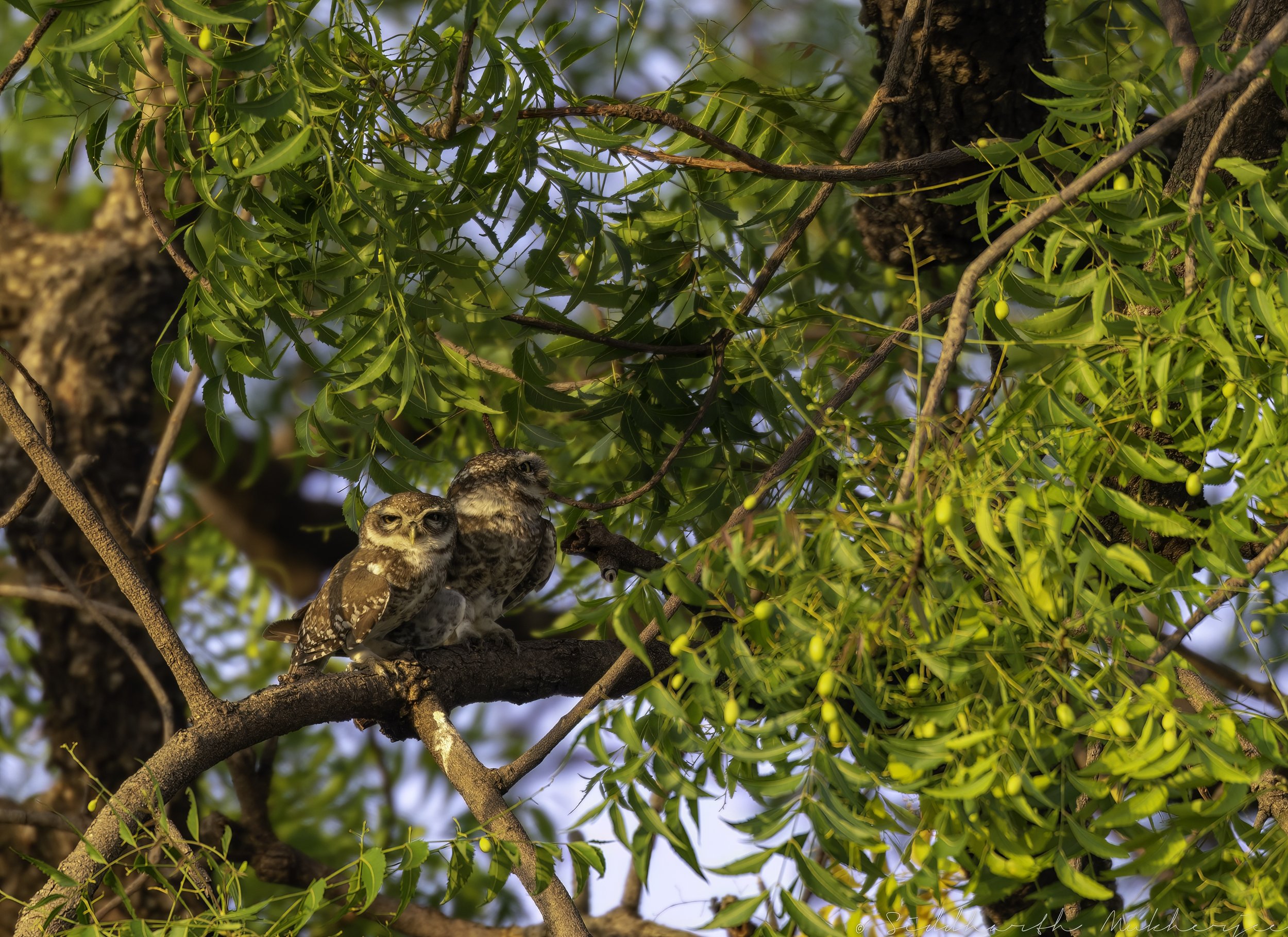
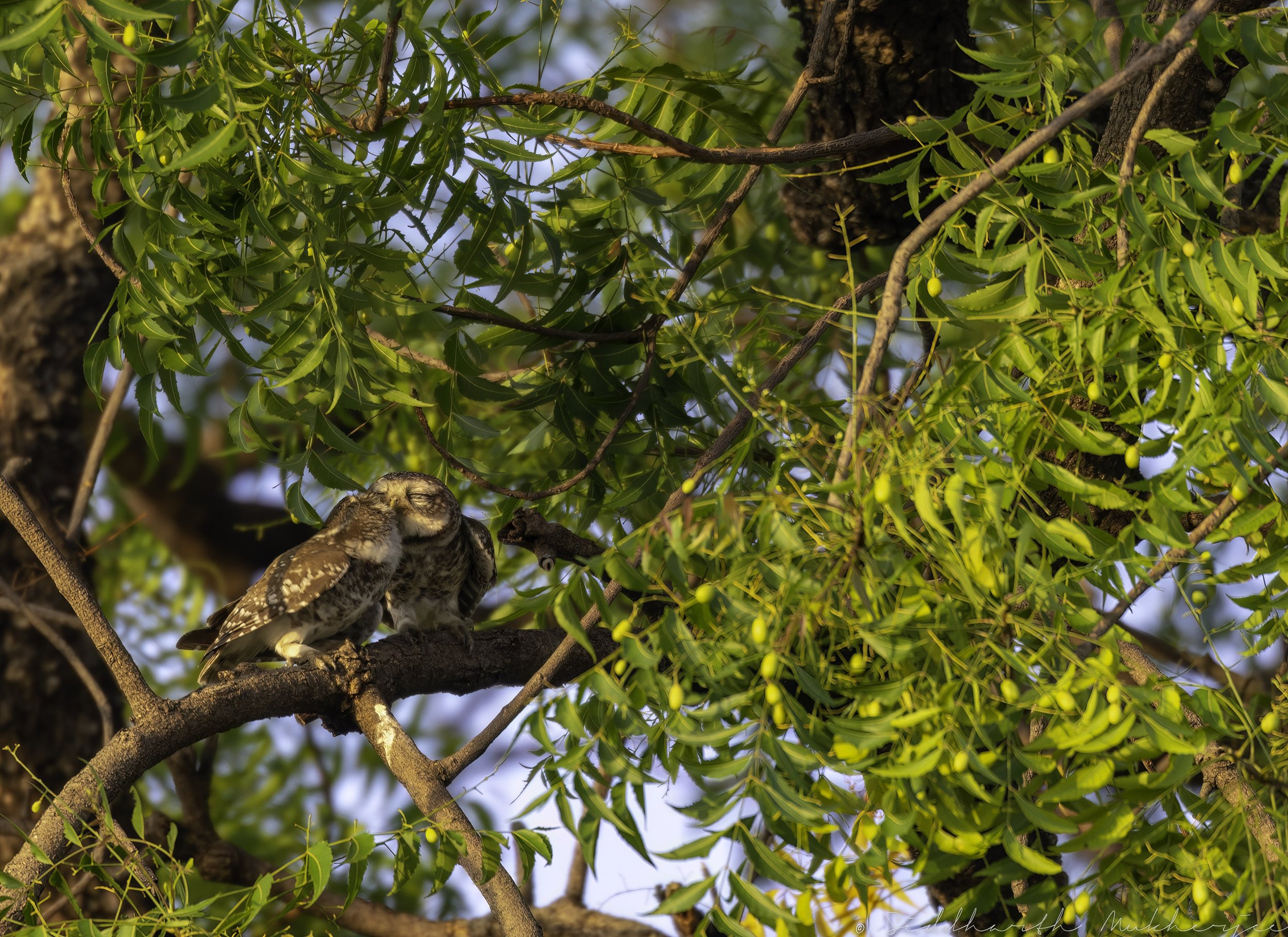

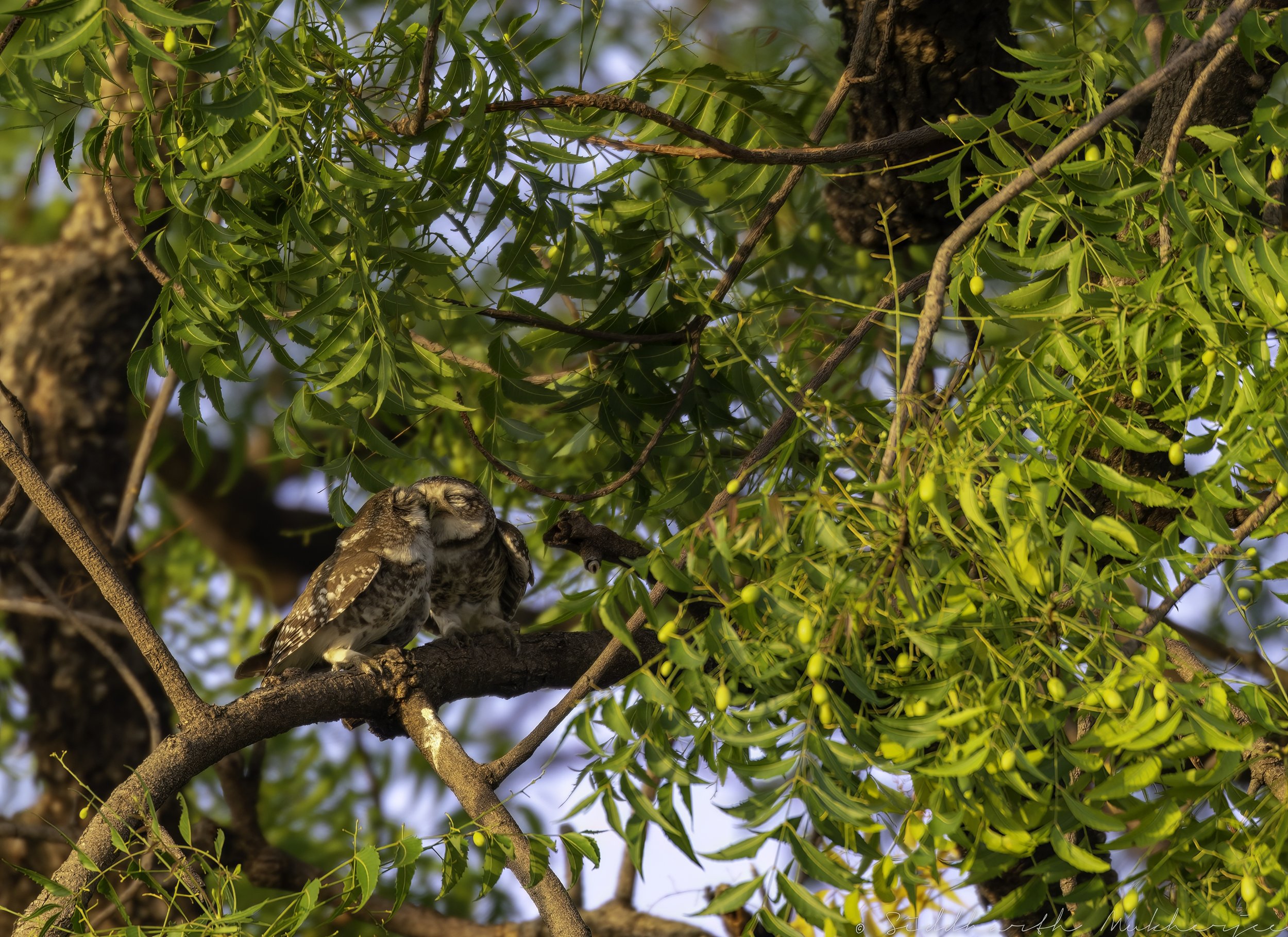
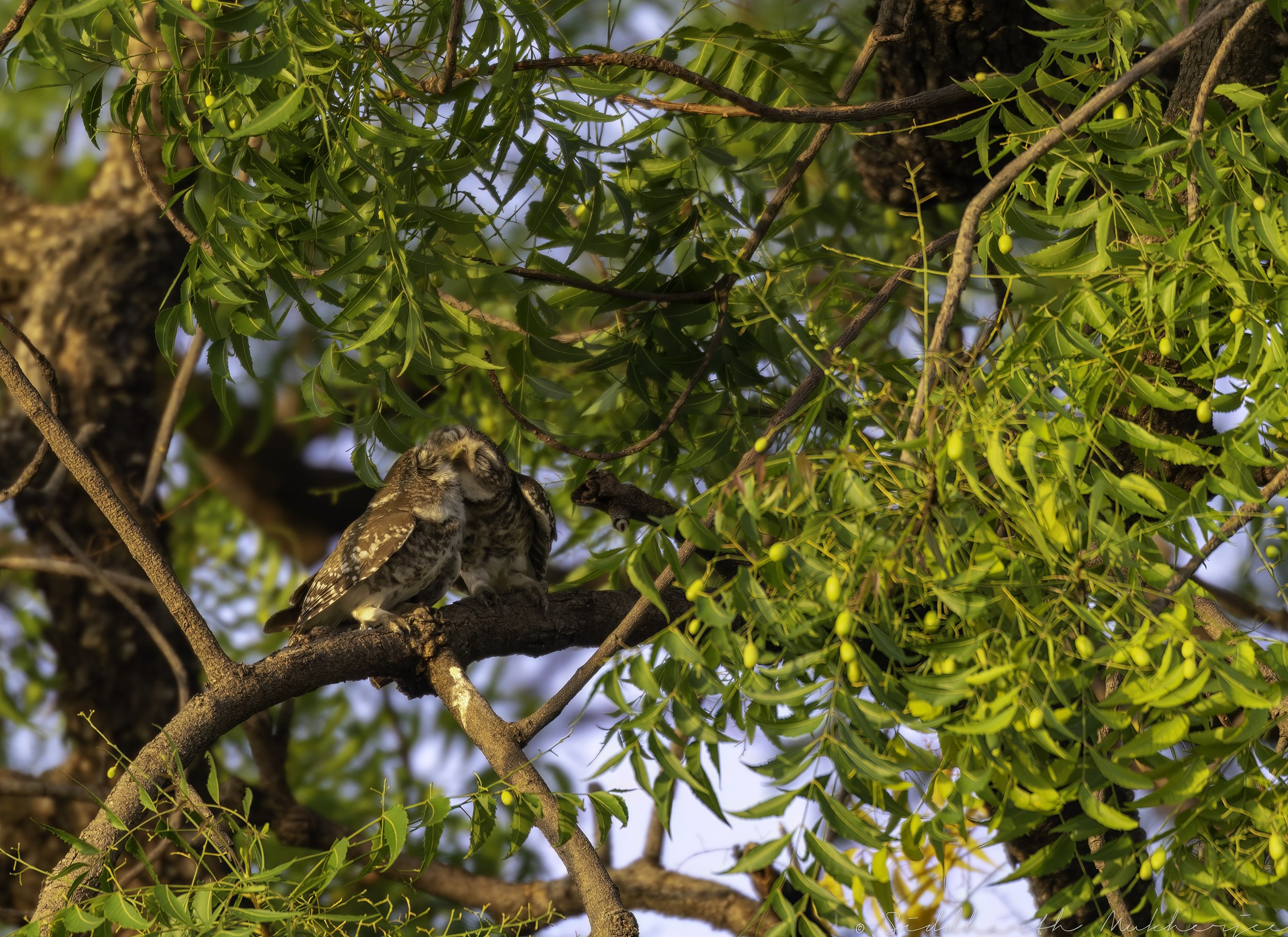
The following footage was recorded on 12th February on the grasslands near Shirsupal at the Bhigwan Bird Sanctuary.
Related Posts

